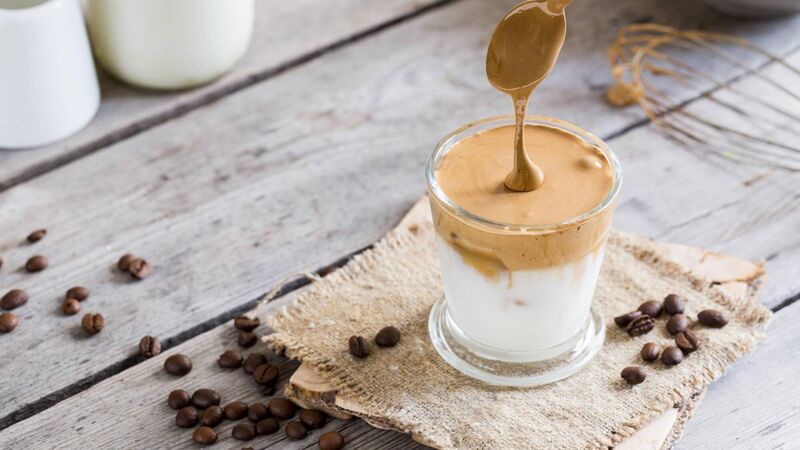Cork Views: Our food habits have changed, and we’re not the better for it

Why is a latte not just a latte, asks Áilín Quinlan.
“No thanks,” I said, “just a small one, please.”
I was a bit bemused - as I recall, they used to say “small, medium or large?” Now, it seemed, your only offered option was a large.
This was a change.
“Well,” a friend said, when I told her. “At least they didn’t offer you sprinkles for it. Or ice-cream.”
Ice-cream?
In a coffee?
I gaped.
“But I have never heard of anyone putting ice-cream in a latte,” I said wonderingly.
“Ah,” she said, “ya baba ya; ya haven’t lived.”
I was wondering; how come everyone seems to have a passion these days for the overly sweet, the syrupy, or for these strong, multi-layered or spicy flavourings and sauces?
For instance, why is a latte not just a latte? Why does it have to be a Caramel Brulee Latte? Or a Gingerbread Latte? Or a Chocolate-Cookie-Praline Latte?
White Chocolate Mocha Frappucino? Cookie Crumble Frappuccino? Dear God.
A scary book came out a year or two ago. It’s called .
It’s about the stuff so many of us are eating now. Tellingly, the sub-title is Why Do We All Eat Stuff That Isn’t Food And Why Can’t We Stop?
Adults living in Europe now get nearly 60% of their calories from ultra-processed foods, according to research.
This has reportedly risen to 65% for younger people, and a UK study showed that for children and poorer people or those from disadvantaged areas, that figure can go as high as 80%.
What are ultra-processed foods? Basically, UPFs are stuff that have gone through a number of different processes in their manufacture, and which generally contain more than one ingredient you’d rarely if ever find in an ordinary kitchen. In other words, stuff most of us would have to google - hydrolysed proteins, fructose, invert sugar, maltodextrin, interestified oil.
One scientist has been quoted as saying that, in fact, most UPF is not food at all – it’s an industrially produced edible substance.
So, yes; things like packaged snacks, ice-cream and crisps, mass-produced bread, sausages, pizzas, chicken nuggets, biscuits, fizzy drinks, sweets, and a lot of breakfast cereals. And get this – a lot of baby food.
Oh sure, they often taste great. These foods often have more flavour than real food. Because they’re sweeter. They have more fat. More salt.
Much nicer and tastier and easier to eat, than, say, an apple or a carrot. Or a saucepan full of cabbage.
There is research warning that a high consumption of UPFs can increase the risk of high blood pressure, heart problems and strokes, to name but a few health uglies.
The thing is, though, this cheap, tasty, convenient and high-calorie food is just really very popular with people. It makes meals so easy when you’re under pressure.
Plus, it offers satisfaction because, presumably, given their popularity with the general public, UPFs reach this thing called a Bliss Point.
The Bliss Point is the exact ratio of sugar, salt and fat that makes a food deeply satisfying and virtually irresistible.
That’s because eating it releases the hormone dopamine in the brain, which in turn gives us a burst of pleasure and a feeling of reward and satisfaction.
Which of course can encourage us to eat more. And more. Think of crisps or chocolate. They always taste like more. Much more so, than, say, that poor old carrot.
So where do we go from there? Well, I read an interview with Dr Chris van Tulleken, one of the world’s leading experts on the UPF controversy, and the author of .
The guy holds a medical degree from Oxford and earned a PhD in molecular virology. He is also an associate professor at University College London and practises as an infectious diseases doctor. You could say he’s worth listening to.
If you want to take just one baby step away from UPFs, Tulleken says, start with fizzy drinks. Stop drinking them. Yes, even the diet ones.
In the interview, he said he’d like UPFs to be treated like cigarettes. In other words, very heavily taxed. Banned from schools. And definitely not marketed to children.
Let’s put it very simply.
At the end of the day, there’s always a cost-benefit ratio to everything we do.
In other words, if you’re sensible, which, all too often, we aren’t, because we’re too busy, too worried, too preoccupied and way too stressed to think things through properly, you weigh up the cost and the benefits of doing something.
So, while the benefits of highly processed ready-made UPF foods are high - great tasting, convenience, a feeling of satisfaction and satiety, the cost - if the research is on the ball - may potentially be unexpectedly high in terms of the long-term negative effects on your health.
And so, while the cost of making fresh, homemade food with vegetables and plain, unprocessed meat is high in terms of time, trouble and all that peeling and chopping, the benefits are also high in that they are undoubtedly very good for your health.
So the thing is, which highs do you want?







 App?
App?







